
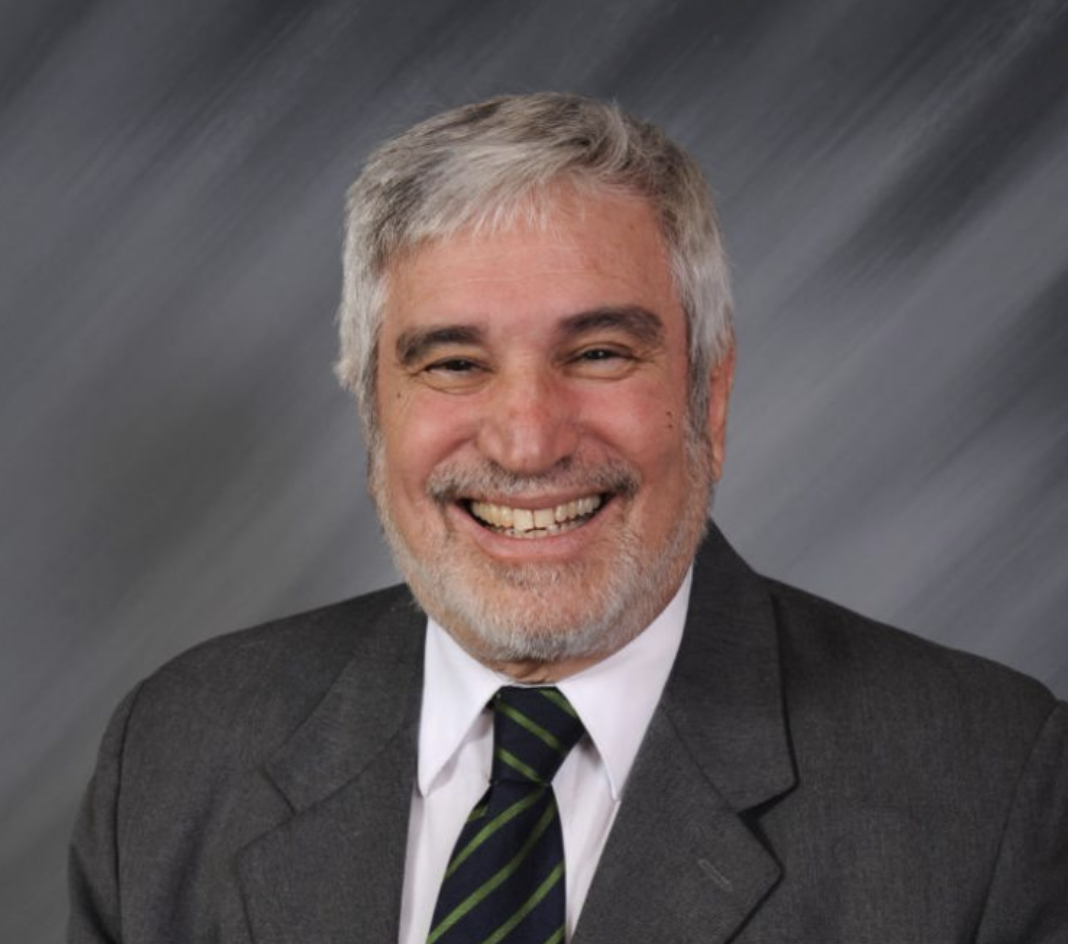
Travel Marketing To and Protecting Visiting Children
One of the most difficult segments of the tourism industry to which to market protect the children or young adult segment, In reality, this segment breaks down into at least four sub-segments, and each of these has its own challenges and opportunities.
Although in most nations the law defines a child as anyone who is not an adult (under 18 years of age) from the perspective of tourism there are major differences between an infant and a teenager. These differences manifest themselves in not only how we market to them but the products that we offer. One way to analyze this multivariate market is to divide the child/young adult tourist segment into categories such as:
- Infant/diaper travel (newborn to 2 years of age)
- Young children travel: (2-10 years of age)
- Pre-adolescent travel: (10-13 years of age)
- Adolescent travel: (13-17 years of age)
These subdivisions are only approximations and in reality, the travel sociological patterns of each group merge one into the other and also differ one from the other. They are used here merely as divisions of convenience.
The Child/Young adult/Family travel market is a large one. According to the (US) Family Travel Association it is estimated that in the United States (and we can assume the same holds true for many other nations) that family travel potentially comprised up to 35% of the total travel market. Additionally, most of this travel is discretionary travel and often families with young children and adults tend to spend more during their trip than do single travelers or couples traveling without children, According to the US Family Travel Association there are four key factors that are driving this segments of the market’s growth. They are:
- Busy parents want to spend more quality time with their children and travel is one way in which they can accomplish this goal
- Travel allows parents to provide educational and life-enhancing experiences and learning in an unstructured and non-judgmental setting
- There is an ever-expanding number of family travel products ranging from lodging to restaurant menus and children’s discounts
- Grandparent-grandchildren travel produces long-term memories across generations.
Although few travel destinations expressly go after children as the motivator for travel (exceptions to this rule are locations such as: Anaheim, CA, Orlando, Florida, or Disney Paris) children play a large role in travel and in travel destinations decisions. For example:
- Market fragmentation. The under 18-year old market is not only expansive but highly diverse. The needs of a parent traveling with an infant are different from a parent traveling with a teenager. If marketing to a portion of the family travel market, think through which segment is the priority and then market to that segment.
- Negative motivators. With a few exceptions, most travel decisions are not made specifically at the child’s request. However, children can complain enough that parents choose not to go to a specific location. Destinations might not attract visitors due to their child-appeal but they can lose visitors due to their lack of child-appeal.
- Food dislikes. Children, especially on vacation, can be a challenge to feed. Often they reject fancy foods and fine dining. Tourism destinations that seek “family markets” must be sure to offer a variety of “simpler” or basic foods at portion control quantities and at affordable prices
- Noise control. Children can be noisy. Tourism areas that seek to be child-friendly need to provide spaces where children are not expected to speak in moderate tones and will not be disturbing to other guests. Children’s noise may be seen as either cute or annoying depending on the location and situation into which they are placed.
- Centers of Lodging Children; Tourism family destinations need to think through the lodging challenges. These range for rails around swimming pools in the case or older children to easily accessible diaper changing areas. Lodging locations need to offer a variety of unique services from childcare to bottle warmers.
- Cultural events: Children often complain of boredom and push parents to leave a locale at an earlier time than the parents might prefer. On the other hand, if children are not exposed to museums, plays, or concerts they will never learn. Tourism destinations that seek the family market may want to consider not only matinees but also half –performances or other methods to deal with shorter attention spans.
To help you market to this important segment of the world of travel and tourism, Tourism Tidbits offers the following suggestions.
-Understand what drives your segment of the child/young adult travel market. Because this is such a wide segment of the travel market, no one destination can appeal to all of it. Segment your market by attractions, price and offerings and then appeal to the part of the youth market that matches your reality.
-Young Adult and Children’s tourism is multi-faceted. Some of the more popular sports for children are amusement parks, seaside vacations, television-inspired vacations and school cultural experiences. The latter is important because it occurs outside of the family and usually has a prepaid package as part of the experience. The school travel tourism market often has not been recognized as a major source of income by the tourism industry.
-Do not overlook multi-generational travel. Grandparents love to spoil grandchildren and recent retirees might be the wealthiest brackets of retired people in history. Young grandparents are still well enough for physical activity and wealthy enough to spoil the next generation. Develop special grandparent/grandchildren packages. Offer hotel rooms that provide both privacy and easy access and develop food and eating schedules around young travelers’ needs.
-See and market to children as sophisticated consumers. Children watch television and are Internet savvy. Offer well thought through services that appeal to specific age groups. Remember one size does not fit all. As children are ever more exposed to a computerized world they are “aging” faster and are more aware of everything from sex to politics at ever-younger ages.
Dr. Peter Tarlow is president of Tourism & More and head of the eTN Travel Security and Certification program. More information: www.certified.travel
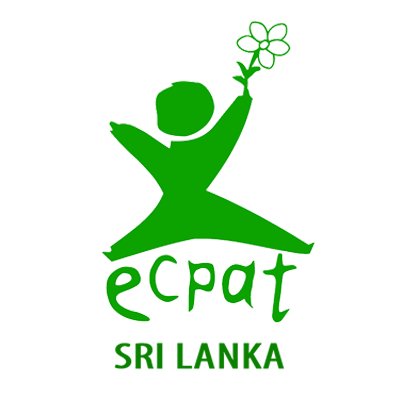
Geneva: Tourism sector meets to tackle human rights issues in the industry
Representatives of the travel and tourism industry are meeting at the UN in Geneva today to discuss the global action needed to end human trafficking, forced labour and the sexual exploitation of children within the sector.
Co-organized by ECPAT and the International Tourism Partnership, the United Nations Forum on Business and Human Rights, will be the first time the sector has gathered to discuss possible solutions to these shared challenges before a United Nations audience.
The travel and tourism industry has rapidly expanded in recent years, with international tourist arrivals increasing from 528 million in 2005 to 1,323 million in 2017. Many developed countries that were once considered “remote” have now opened up to international visitors. However, this expansion has brought challenges to human rights, with the trafficking and sexual exploitation of children increasing alongside the industry’s expansion. No country is immune to this ever-growing risk. However, the industry is also in a unique position to identify the most vulnerable – and to prevent these breaches of human rights.
The industry has a role
“As the reach of global tourism expands, so too do opportunities for those who travel to harm children by sexually exploiting them,” said Theo Noten, Programme Manager, ECPAT Netherlands. “The travel and tourism industry has a key role to play in keeping children safe. Together with business leaders, especially from the travel industry, we call upon the private sector and governments to protect children and meet the commitments made to achieve the Sustainable Development Goals. No child should be left behind!”
Commitment to ending these crimes
At the meeting, experts from non-profit organizations will stand shoulder to shoulder with senior leaders from global travel and tourism companies, such as IATA, the Hilton group and TUI. They will commit to tackling these crimes, which cause misery to millions around the world and in the long-term have a direct impact on the tourism industry.
Speaking before the event, Madhu Rajesh, Director of the International Tourism Partnership explained how her organization is working to help protect human rights in the industry. “ITP convenes the world’s leading hotel groups for collaborative action on these critical human rights issues,” she said. “And in doing so we create practical tools and programmes that help the hotel industry as a whole move further and faster than they can working individually. For example, we’ve united our membership around support for ITP’s Principles on Forced Labour, and encourage their adoption by the wider industry. Through our work, we aim to convene key stakeholders from the public and private sector and encourage cross-sector collaboration on this vital issue.”
End modern slavery
Helen Taylor, Director of Grant Programs at the Global Fund to End Modern Slavery added: “GFEMS is committed to ending modern slavery by making it economically unprofitable, and businesses must play a prominent role if we hope to achieve that mission. We’re pleased to see global tourism business leaders joining forces to work towards our shared goal of fighting human trafficking and hope this forum will motivate other companies to get involved in driving solutions forward as well.”
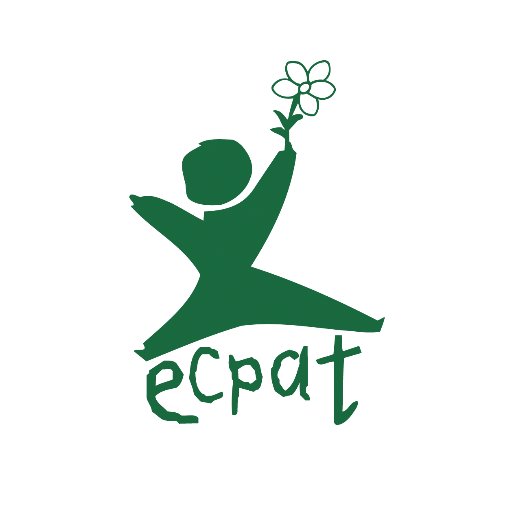
Child Prostitution in Malaysia: A Haven for Human Trafficking generating Tourism Revenue
Is Child abuse through Tourism part of “Malaysia Truly Asia” ? Tourism is big business in Malaysia. Abusing children is more lucrative than exploiting adults in the travel and tourism industry. According to Child Rights International Network, Malaysia is a Haven for Child Prostitution.
Child Protection may no longer be a priority for UNWTO after Secretary-General Zurab Pololikashvili quietly and with not even an explanation to long-serving members canceled all meetings of the UNWTO Child Protection Committee from the minute he took over the leadership of UNWTO. Even to members of the committee, like the publisher of this wire, it’s not clear if this group still has a function.
It waits to be seen how much of a leader will PATA take at their upcoming PATA Mart in Langkawi in September? Checking the PATA Mart agenda, human trafficking of children is not yet on the agenda. Is this an uncomfortable subject to discuss? PATA had demonstrated their support for Child Protection in the past. This will hopefully happen again at the PATA Mart in Malaysia.
Coordinated with the United Nations, World Day Against Trafficking in Persons, ECPAT in Bangkok today is ringing alarm bells loud and clear. ECPAT released their ECPAT-Country-Overview-Malaysia-2018 , a devastating report about the extent of child prostitution, human trafficking and the legality of child marriage in Malaysia. Malaysia is a peaceful mostly Islamic South East Asian country, and a great destination for excellent food, nature, cities, and beaches. Malaysia is a dream travel destination.
ECPAT’s devistating report opens the dark side of Tourism to Malaysia. This dark side includes human trafficking and exploiting children through prostitution, child marriage. It’s a massive problem in Malaysia.
The report demonstrates human traffickers may be exploiting children through prostitution in Malaysia because among other reasons – it is more lucrative than exploiting adults.
ECPAT International, a global network of NGOs, has released a report detailing the scale of the sexual exploitation of children in the country which highlights this worrying trend. The document says that it can be more than twice as profitable to sexually exploit children than adults. And while reliable data on this topic is difficult to find, it is thought that at least 150 children a year are being sexually exploited in Malaysia in this manner.
“Prostitution is illegal in Malaysia, yet it remains widespread,” says Mark Kavenagh, Head of Research at ECPAT International. “Indications are that a significant number of young women and girls, from across Southeast Asia – are sexually exploited in this way in Malaysia. They are often tricked into the sex trade after having been recruited for what they thought was going to be work in restaurants, hotels and beauty salons. There are also cases of marriage being used to recruit, such as with Vietnamese women and girls who entered into brokered marriages and were later forced into sex work.”
While it is difficult to quantify the number of child victims who have been trafficked for sexual purposes, Malaysia’s relatively porous borders and location in central Southeast Asia make it a destination, transit country and source country for trafficking to serve both domestic and tourist markets.
Child marriages, which remain legal in some cases in Malaysia, also endanger children, says ECPAT. “We know that child early or forced marriage can be devastating to children, from preventing their right to education to exposing them to sexual violence,” explained Kavenagh. “Sometimes children forced into marriage are subsequently sold by family members.”
The report also warns that online child sexual exploitation is a growing concern, with Malaysia now ranked third amongst ASEAN countries in terms of possession and distribution of child sexual abuse material. The live streaming of child sexual abuse, online grooming of children for sexual purposes, and sexual extortion of children are all on the rise according to ECPAT.
However, Malaysia has made progress in tackling trafficking in recent years, and the United States government recently acknowledged Malaysia’s efforts to strengthen enforcement of the law and expand trafficking investigations and prosecutions. Malaysia also recently passed the 2016 amendment to the Child Act that established a registry of child sex offenders, and the Sexual Offenses Against Children Act 2017, which came into force this year and strengthened child protection by criminalizing a broader array of activities. However, after good progress in 2017 saw the country upgraded, Malaysia was downgraded to the “Tier 2 watch list” in the 2018 US Department of State Trafficking in Persons report.
The ECPAT report’s recommendations also call on Malaysia to increase efforts to better understand how it is impacted by child sexual exploitation, alleging that there is no apparent initiative to increase the scope of research done on the sexual exploitation of children in Malaysia.
“We know that this crime is a massive problem, but it is also clear that there are significant gaps in our understanding of the issue – both in Malaysia and the region,” says Kavenagh. “This is a crime that happens in the shadows. Criminals like shadows. ECPAT would like to invite the Malaysian government to help us address this as a matter of urgency.”
Malaysia cannot lose face in the global travel industry and should aggressively and immediately address this issue more seriously. It’s important for Malaysia as a leading holiday destination to become a leader and not a perpetrator of this issue.
Most major hotel groups are in Malaysia and operate resorts and hotels in cities. Most major airlines fly to Malaysia. What are these hotels, and what are airlines doing to prevent this crime? eTN is interested in your feedback and welcomes comments. Feel free to email us at [email protected] (also confidential) or post stories and feedback on www.buzz.travel
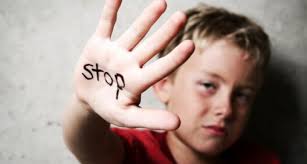
Investing in the prevention of violence against children is good business
UNICEF and the Office of the UN Special Representative of the Secretary General on Violence against Children launched their joint study: “The Private Sector and the Prevention of Violence against Children in Latin America and the Caribbean” today.
The study points out the alarming context of violence against children and adolescents in the Latin America and the Caribbean region, where:
• Every day, 67 adolescents are victims of homicide
• 2 out of 3 children suffer from some type of violent discipline in their home
• 1 in 10 adults believe physical and humiliating punishment is necessary to educate a child.
The study presents positive regional private sector practices to eliminate all forms of violence against children and provides arguments to support increased business investment in private sector violence against children prevention strategies.
“Our joint publication is a key contribution to implementation of the 2030 Agenda, which has the ambitious vision of a world that invests in its children so they grow up free from violence, abuse and exploitation. This joint study emphasizes the crucial role that the private sector plays in this new development paradigm. Business investment and innovation are not only major drivers of productivity, inclusive economic growth and job creation; they can also help solve the challenges that compromise children’s right to be protected from all forms of violence. It is only when people and communities prosper, that businesses can sustainably succeed,” stated the UN Special Representative of the Secretary-General on Violence against Children, Marta Santos Pais.
In accordance with the Children Rights and Business Principles, developed in 2012, private sector companies have the responsibility to be positive agents of change for children and to take action to respect and promote the rights of children in their operations.
“The private sector is one of the main pillars of local and family economies, employs fathers, mothers and caregivers and influences national policies, so it can and must play a fundamental role in the prevention of violence against children,” said Marita Perceval, UNICEF’s Regional Director for Latin America and the Caribbean. “The good practices presented in this document, with measurable and replicable results, can serve as an example to companies in the region so that we all contribute to eradicate violence against children,” she added.
‘The Private Sector and the Prevention of Violence against Children in Latin America and the Caribbean Study’ was launched in Bogotá, during the Annual General Meeting of The Code, an organization which ensures compliance with the Code of Conduct on International Social Responsibility for the protection of children and adolescents against commercial sexual exploitation associated with travel and tourism.
For more information about UNICEF and its work, click here. For more information about the Office of the SRSG-VAC and its work, click here.

Child Protection has a powerful voice at the WTTC Summit in Buenos Aires
At a press conference today in Buenos Aires at the ongoing WTTC Summit Sandra Howard, Vice Minister, Commerce Industry and Tourism of Colombia and Helen Marano, Executive Vice President External Affairs for WTTC today announced the International Summit on Child Protection in Bogota, Columbia 6-7 June 2018
The Summit will be hosted by the Government of Columbia, which has taken a number of innovative child protection measures in the travel and tourism sector.
It will explore accelerated actions for implementation of the recommendations of the Global Study on Sexual Exploitation of Children in Travel and Tourism.
eTN publisher Juergen Steinmetz will be speaking at the event. Steinmetz is a member of the UNWTO Task Force against exploitation of children. The annual meeting of this group during the ITB trade show in Berlin in March was canceled by the new UNWTO Secretary-General after he took office.
UNWTO never responded to why this meeting was canceled. When asked by Steinmetz the Colombian Vice Minister confirmed the importance and also the commitment for UNWTO to be part of the upcoming conference but had no explanation why the UNWTO task group did not meet. She assumed the new Secretary General is shifting the way the World Tourism Organization will deal with the problem of child protection, and supporting the conference in Colombia may be the way forward.
After the press conference WTTC and ECPAT issued this press release:
Summit will take place 6-7 June 2018 in Ágora Bogotá Convention Center: Bogotá DC, Colombia
- Increasing interconnectivity and cheaper travel has created enormous opportunities – but at a price.
- Despite global efforts, the last two decades have seen an increase in the sexual exploitation of children. Much of this increase is associated with traveling child sex offenders, who often take advantage of poverty, a culture of impunity, weak laws and a lack of police capacity to harm children.
- The sexual exploitation of children causes long-term physical and emotional damage, harms communities, cheapens cultures and threatens national efforts to escape poverty.
Urgent action is needed in all countries to better protect children from traveling child sex offenders.
The sexual exploitation of children is often facilitated through tourist hotels, bars and restaurants – and offenders frequently avail themselves of the services of the travel industry to exploit children. This puts the travel and tourism sector in a unique position to work towards protecting children and ending this crime.
The International Summit on Child Protection in Travel and Tourism will bring together world leaders, the UN; governments; travel agents, tour operators, hotels and other travel businesses; technology and booking companies; police; international NGOs; and civil society organizations. Over two days they will discuss how to better protect children, prevent abuse from happening and catch those committing this crime.
Possible leads/stories that may emerge from discussions with participants at the summit:
- Interview opportunities with government and business leaders in this field;
- Stories that show what businesses and governments plan to do to, or have failed to achieve in preventing the sexual exploitation of children – especially in light of upcoming mega tourism events;
- Techniques and approaches that have worked in protecting children and catching offenders;
- Businesses and governments may pledge to sign the UNWTO Global Code of Ethics for Tourism, which includes binding commitments to end the sexual exploitation of children in travel and tourism;
- Specific travel businesses (see list of participants) may pledge to adopt corporate policies against the sexual exploitation of children, which may include training on prevention and responding for travel and tourism professionals;
- Governments and law enforcement agencies may pledge to increase efforts to catch traveling child sex offenders, particularly through transnational laws;
- Businesses may pledge to crack down on voluntourism practices, particularly in orphanages, that do not guarantee the safety of children; and
- Efforts may be made to increase awareness of the sexual exploitation of children in travel and tourism, especially among markets that are an emerging source of tourists.
Colombian Minister of Trade, Industry and Tourism, María Lorena Gutiérrez, summit host, said “Colombia, as a member of the GARA Child Protection Action Group for the Americas, is strongly enforcing laws and Responsible Tourism codes amongst our industry, because we understand that we are all -states, business and citizens- the main warrantors of our children´s rights. We cannot turn our heads in another direction. This first Summit in his kind will be an exceptional opportunity to learn and share what’s been done around the world to fight this terrible crime”.
Helen Marano, EVP, External Affairs, WTTC, comments: “WTTC is proud to support the International Summit on Child Protection. Serving on the Task Force allows WTTC the opportunity to is serving on the Task Force as well to mobilize the strength of the Council as it is vital to engage the private sector as we work collaboratively in combatting this challenge.”
Notes for Editors:
Much of the agenda of this meeting will revolve around the Global Study on Sexual Exploitation of Children in Travel and Tourismwhich was released in 2016 and documents the continued growth of this crime, the increasing numbers of child victims, and the global nature of the problem. The study presents 46 recommendations addressing international and regional inter-governmental bodies; non-governmental organizations; law enforcement agencies; national governments and the private sector. High on the agenda will be how to implement these recommendations, how to expand and accelerate action and how to use travel and tourism to contribute to the 2030 Agenda for Sustainable Development and its Sustainable Development Goals.
Hosts
The Colombian Ministry of Trade, Industry and Tourism in cooperation with the Tourism Authority of the Capital District of Bogota, the Colombian Ministry of Foreign Affairs, the Colombian Child Protection Authority, and ECPAT Colombia – Fundación Renacer.
Among the co-organizers of the Summit are the High Level Task Force on Child Protection in Travel and Tourism, the United Nations Children’s Fund, the United Nations Office on Drugs and Crime, the World Travel and Tourism Council, and ECPAT International. The Summit is organized with the participation of the World Tourism Organization.
Read the Executive Summary and the Global Study Report.
A word about words
When describing the sexual exploitation of children, irresponsible or ill-informed use of terminology can trivialize or sensationalize the issue, stigmatize victims and make it difficult to raise awareness or facilitate enlightened discourse.
For example, the unqualified use of the terms “pornography” and “prostitution” should only occur when describing adult activities. Using these terms in relation to the sexual abuse of children can lend a sense of normalcy and legitimacy to offending by implying that the child has transactional agency or has provided some degree of consent. Children can never consent to sexual activities with an adult.
Below are some other terms that are commonly used when describing the sexual exploitation of children, but that it is better to avoid, or use with caution:
- “Child pornography.” It is better to use the term “(online) child sexual abuse material,” or “(online) child sexual exploitation”;
- “Child prostitute.” It is better to use the term “child trafficked for sexual purposes,” or “child exploited through/in/for prostitution”;
- “Child sex tourism.” It is better to use the term “sexual exploitation of children in travel and tourism”; and
- “Child sex tourist.” It is better to use the term “traveling child sex offender” or “transnational child sex offender.”
Never use terms that trivialize the sexual assault of children, such as “kiddie porn,” “child porn,” “kiddie fiddler,” or “pedo.” (Note that a paedophile is a person with a specific mental health disorder who has a sustained sexual interest in pre-pubescent children. Not all child sex offenders have a paedophilic disorder and not all those with a paedophilic disorder are child sex offenders.)
For more information, consult the Terminology Guidelines for the Protection of Children from Sexual Exploitation and Sexual Abuse.
About ECPAT
ECPAT International is a global network of organisations dedicated to ending the sexual exploitation of children. With 102 members in 93 countries, ECPAT focuses on the trafficking of children for sexual purposes; early and forced marriage; online child sexual exploitation; and the sexual exploitation of children in the travel and tourism sector. The ECPAT International Secretariat is based in Bangkok Thailand.
For more information about ECPAT, go to www.ecpat.org
About WTTC: The World Travel & Tourism Council is the global authority on the economic and social contribution of Travel & Tourism. It promotes sustainable growth for the sector, working with governments and international institutions to create jobs, to drive exports and to generate prosperity. Every year WTTC, together with Oxford Economics, produces its flagship Economic Impact Report, which looks at the socioeconomic benefits of Travel & Tourism on global, regional and country level. This year the report shows data on 25 regional groupings and 185 countries.
Travel & Tourism is a key driver for investment and economic growth globally. The sector contributes US$8.3 trillion or 10.4% of global GDP, once all direct, indirect and induced impacts are taken into account. The sector also accounts for 313 million jobs or one in ten of all jobs on the planet.
For over 25 years, WTTC has been the voice of this industry globally. Members are the Chairs, Presidents and Chief Executives of the world’s leading, private sector Travel & Tourism businesses, who bring specialist knowledge to guide government policy and decision-making, and raise awareness of the importance of the sector.
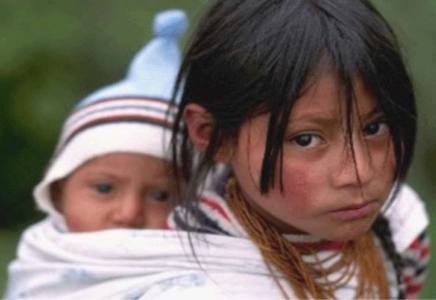
Why responsible tourists should visit Honduras, El Salvador, Dominican Republic and Guatemala
Responsible tourists should look to travel to and support Honduras, El Salvador, Dominican Republic and Guatemala through tourism. Responsible tourists should check carefully when supporting other Caribbean and Latin American Countries. This message becomes timely with the start of the WTTC (World Travel and Tourism Summit) about to start in Buenos Aires, Argentina.
Except for Honduras, El Salvador, Dominican Republic and Guatemala, other Latin American and Caribbean countries are struggling to make progress against child marriage compared with countries in South Asia, according to a UNICEF report.
While other parts of the world have reduced the incidence of child marriage, “this has not been the case in our region, where one out of four women are being married before 18 years old,” says local UNICEF head Maria Cristina Perceval.
Latin America and the Caribbean has become the only region in the world where child marriages have not decreased significantly over the past decade, according to a recent report by the U.N. children’s agency (UNICEF).
“We are observing a real progress in other parts of the world to protect girls from child marriage,” stated in Panama City Maria Cristina Perceval, chief of Unicef for Latin America and the Caribbean. “However, this has not been the case in our region, where one out of four women are being married before 18 years old.”
As a result, these girls do not benefit from the same life opportunities in the medium and long term, with a higher risk of sexual violence, early pregnancies, dropping off school, in addition with the social exclusion from their peers, added Perceval.
Only four countries in the region have banned child marriage, with Honduras, El Salvador, Dominican Republic and Guatemala.
In February, another Unicef report warned that there had been insufficient progress in reducing high teenage pregnancy rates in Latin America and the Caribbean: although overall teenage pregnancy rates “dropped slightly” over the past three decades, the region has the second-highest rate globally.
The total number of girls married in childhood stands at 12 million per year and without public policies properly addressing the issue, more than 150 million additional girls will marry before their 18th birthday by 2030, found the report.
Globally, about one in six adolescent girls (aged 15 to 19) are currently married or in a union. West and Central Africa has the highest proportion of married adolescents (27 percent), followed by Eastern and Southern Africa (20 percent) and the Middle East and North Africa (13 percent). Latin America ranks fourth with 11 percent of the total of adolescent girls.
According to UNICEF, child marriages and early unions in the region are associated with the high rate of teenage pregnancies, the second in the world, and the risk of sexual violence, in addition to gender inequality.
Factors to which join many others such as poverty, social norms, gender roles and relationships, beliefs and gaps in national legislation.
‘In the region, the equality of girls is limited by the impact of early motherhood, violence and limited life opportunities. We cannot keep our eyes closed to a lost potential and forgotten rights ‘, hence the urgent call to put an end to these practices said Perceval.

New law to protect children
In a huge win for victims of online sex trafficking, FOSTA-SESTA was signed into law by the President this week. Backpage, an online marketplace notorious for trafficking children, has now been seized by the U.S. Department of Justice.
The new law will allow victims of human trafficking to sue websites that knowingly assisted in the crime and will give prosecutors a new tool to criminally go after these websites.
On the backpage website, a notice has been posted by the US Department of Justice:
backpage.com and affiliated websites have been seized
as part of an enforcement action by the Federal Bureau of Investigation, the U.S. Postal Inspection Service, and the Internal Revenue Service Criminal Investigation Division, with analytical assistance from the Joint Regional Intelligence Center.
Other agencies particpating in and supporting the enforcement and action include the U.S. Attorney’s Office for the District of Arizona, the U.S. Department of Justice’s Child Exploitation and Obscenity Section, the U.S. Attorney’s Office for the Central District of California, the office of the California Attorney General, and the office of the Texas Attorrney General.

Africa Conference on Child Protection in Travel and Tourism
Moving forward from Recommendations to Commitments and Action
7 May 2018 | Durban, South Africa
1. Background
In June 2018, an International Summit on Child Protection in Travel and Tourism will be hosted by the Government of Colombia, in collaboration with the World Travel and Tourism Council (WTTC), ECPAT International and other stakeholders. The event will explore accelerated actions for implementation of the Recommendations of the Global Study on Sexual Exploitation of Children in Travel and Tourism (SECTT), and provide a roadmap to address this worldwide challenge. The Global Study was developed in cooperation with 67 partners worldwide (including UNWTO, Interpol and UNICEF). The Study has 46 sector-specific Recommendations for various stakeholders including the private sector (such as travel and tourism companies, the ICT industry and companies whose staff members travel for business). The Recommendations fall under five different intervention areas: awareness raising, prevention, reporting, ending impunity and access to justice, care and recovery and they are aligned to the realisation of the Sustainable Development Goals (SDGs) – a number of which relate to child protection and sustainable tourism. The Study was guided by a High-Level Taskforce and informed by detailed studies from every region and several countries, as well as contributions from experts and children. It presents the most updated picture of the problem of the sexual exploitation of children in travel and tourism, including in Africa and its Recommendations are key for improving private sector responses to prevent and combat this crime. Its findings confirm that no region is untouched by this challenge and no country is ‘immune’.
2. Rationale for the Conference
Two years after the launch of the Global Study, the need for coordinated efforts to ensure systemic translation of commitments into action cannot be over emphasised. This has been called for at various meetings including, at a Conference on Combatting Sexual Exploitation of Children in Travel and Tourism (SECTT), held in South Africa, in June 2017, and at the ‘Transition Meeting’ for the Global Study, in July 2017. At both meetings, key stakeholders as well as partners of the Global Study called for coordinated action for combatting SECTT and committed to concrete actions against
a call for a Regional Conference on Child Protection in Travel and Tourism was made by the then Chairperson of the UNWTO Commission for Africa.
In September 2017, the UNWTO adopted the text for a Framework Convention on Ethics in Tourism, which is a binding instrument with provisions on child protection and obliges States Parties to enforce at national level once they ratify it upon its entry into force. As States and the private sector seek to promote Sustainable Tourism for Development, children’s right to protection from violence and exploitation should be at the heart of all actions within the framework of ethical and responsible business practices. The private sector is a key stakeholder in ensuring that effective mechanisms are put into place for tourism to thrive sustainably, without subjecting children to any form of exploitation. Thus, there is a need to continuously promote and facilitate the implementation of the Global Study Recommendations to ensure that child protection remains in the tourism agenda. Various stakeholders in the region have already taken steps in child protection or are already in the process of doing so. These include the Africa Airlines Association (AFRAA), airline companies (such as South African Airways, Rwanda Air, Ethiopian Airlines, Kenya Airways), ACCOR Hotels in Africa and Fair Trade and Travel (FTT). Globally, major hotel and travel companies have been standard-bearers in the application of The Code of Conduct for the protection of SECTT. At the South Africa Conference, children in travel and tourism, such as Carlson Wagonlit Travels, AccorHotels, Hilton and TUI. A number of companies, including well-known brands such as Marriott, Uber USA and American Airlines have acknowledged the gravity of the problem and have also decided to join The Code. In view of these developments, and as a build-up to the International Summit, regional conferences on child protection in travel and tourism will be held. In Africa, the event will be hosted prior to the Africa Travel Indaba, which brings together the private sector from across Africa.
3. Objectives of the Conference
The main objective of the Conference is to expand and strengthen political will and actions in protecting children in travel and tourism based on the Recommendations of the Global Study on SECTT, as a regional contribution towards achieving the SDGs.
The Conference will therefore have the following sub-objectives:
a. To facilitate high-level dialogue with representatives of the tourism industry to enhance responsible business practices in protecting children in travel and tourism.
b. To share promising practices by leading travel and tourism companies in Africa with the view of
providing a regional contribution to the International Summit on Child Protection in Travel and
Tourism that will result in formulating global commitments.
c. To enhance regional cooperation to ensure child protection in travel and tourism.
Format of the Conference
It is envisioned that the Conference will be multi-sectoral and organised in partnership and collaboration of key stakeholders in the travel and tourism industry such as the UNWTO Commission for Africa, Tourism Ministries, African regional entities, UN agencies, private sector representatives and CSOs.
The format of the conference will comprise keynote speeches by high-level representatives of Tourism Ministries and travel and tourism industry. There will be panel discussions and dialogue by key stakeholders to share their practices and commitment towards child protection in travel and tourism. The Conference is scheduled to coincide with the African Travel Indaba to maximise and build on the growing commitments of Tourism Ministries towards sustainable and responsible tourism, as well as to access wide participation of the travel and tourism industry at the event.
The conference is expected to adopt a Private Sector Commitment to Child Protection in Travel and Tourism in Africa, which will be presented to the UNWTO Commission for Africa’s annual conference and the International Summit on Child Protection in Travel and Tourism, both of which will be held in June 2018 in Nigeria and Colombia, respectively.
5. Participants
The Conference is expected to attract 100 participants, drawn primarily from African governments, the African Union, Regional Economic Commissions (RECs), the private sector (including hotels, airline companies, travel agencies and tour operators, taxi companies, ICT companies and banks), police forces, UN agencies, INGOs, CSOs, the media and individual experts.
6. Date and Host Country
The Conference will be held on 7 May 2018 in Durban, South Africa, to coincide with the Africa Travel Indaba.
7. Contacts
For more information, please contact:
Ms Violet Odala, Specialist on SECTT, Africa
ECPAT International. Email: [email protected]

ABA Partners with Busing on the Lookout to Combat Human Trafficking
Washington, DC – The American Bus Association (ABA) – the industry leader advancing North American motorcoach travel and tourism – is proud to partner with Truckers Against Trafficking’s program Busing on the Lookout to combat human trafficking.
“Human trafficking is a disgrace on American roadways that needs to be eradicated,” said ABA President & CEO Peter Pantuso. “Many of our members already participate in human trafficking awareness training for their employees. We look forward to participating in the collective effort with Busing on the Lookout. We have a very diverse industry and ABA wants to be the key connector to the industry with this great program.”
Busing on the Lookout’s mission is to educate and equip all members of the busing industry with the information necessary to enable them to fight human trafficking as part of their everyday jobs. Around the world it is estimated that more than 40 million people are enslaved today. Human trafficking has been reported in all 50 states, and the number of victims in the United States is estimated in the hundreds of thousands.
Bus drivers are already making a difference in fighting this crime. A number of them have already recognized things that didn’t seem right with passengers they’ve been transporting. Their calls to law enforcement have resulted in successful victim recovery.
“Recognizing that through their sheer numbers, extensive travels, and the nature of their jobs, members of the bus industry could provide an extra set of eyes and ears for law enforcement in recovering victims and arresting traffickers, we are seeking to get everyone in the bus industry – drivers, terminal workers, maintenance staff, ticket counter personnel, dispatch operators, etc. – trained on what to look for and how to report it effectively,” explained Annie Sovcik, program director for Busing on the Lookout (BOTL).
“We are grateful to the ABA for its commitment to combatting this heinous crime,” continued Sovcik. “And we are optimistic that through this partnership, we are taking a significant step forward in creating another mobile army on our roadways that can help disrupt trafficking networks.”

Old and new threats of child sexual exploitation in South Asia
EMBARGO – 00:00, 16 MARCH 2018, Bangkok, Thailand – ‘Ancient’ and new forms of sexual exploitation that exist ‘side-by-side’ are putting the children of South Asia at risk says a new report.
Research released this week by ECPAT International claims that the sub-continent has long been a place where the sexual exploitation of children is a serious concern, with early and forced marriage, and the trafficking of children for sexual purposes established norms in many societies. However, the report says that today, children are more prone to be victimized in both the “old and the new worlds evolving side by side.”
“All across South Asia, we have ancient brothels that have always been filled with trafficked girls,” says Rajib Haldar, ECPAT Regional Coordinator for South Asia. “What is new however, is that today these may co-exist with online child sexual exploitation, or even be contributing to this trade by promoting live streaming. At the same time, the old practice of sexually exploiting out-of-school child workers is happening today alongside the cyber bullying of school pupils. In South Asia, sexually abused child brides can live next-door to university educated girls being sexually exploited through social media.”
The report says that the online sexual exploitation of children is one of the most worrying trends in the region, and there are two kinds of online risks that are increasing for children. “On one hand, we see child sexual abuse material created, and exchanged both regionally and globally,” says Haldar. “On the other hand, we see sexual harassment and extortion of children online, mainly affecting girls. In these cases, the perpetrators are generally known to the victims, often peers or adults in the circle of trust. Sexualized images are often shared publicly on social media, and have been moving from more static platforms such as Facebook, to faster moving, more private apps such as WhatsApp, WeChat or Snapchat.”
In South Asia young people are at the forefront of Internet use. For example, in Sri Lanka, more than half of young people are online; in Bangladesh, about 85 percent of the country’s 85 million Internet users are youth; in Pakistan close to half of under 18s spend more than five hours a day online; and India has one of the highest numbers of smart phone users among young people on the planet.
“South Asian young people are gaining access to the Internet at a rapid rate via mobile phones,” says Haldar. “Free Wi-Fi hotspots often act as magnets connecting children. While this is mostly positive, it has a dark side that is increasing the risk of traditional forms of exploitation and abuse.”
The ECPAT research also points a finger at the region’s burgeoning tourism industry, warning that South Asian countries need to move quickly to better understand and counter the threat posed to children through this sector. An adverse impact of the expansion of the travel and tourism sector in South Asia is the increased threat that travelling child sex offenders pose to children. And it is not only foreigners that are a danger. Cases of domestic travelling sex offenders are also on the rise.
“South Asia needs to quickly realize that the multiplication of travel options and vacation packages may imply increasing threats for children also by local travelling child sex offenders,” says the report. “While traditional destinations for foreign child sex offenders, such as those in neighbouring Southeast Asian countries, begin to tighten up legal frameworks and create child protection mechanisms, South Asia is just beginning to acknowledge and address the sexual exploitation of children through travel and tourism.”
Although solid data is not available, previous ECPAT research suggests that the sexual exploitation of children in travel and tourism has been moving beyond traditional tourist locations and has started emerging in most of the countries in the region, especially India and Nepal.
